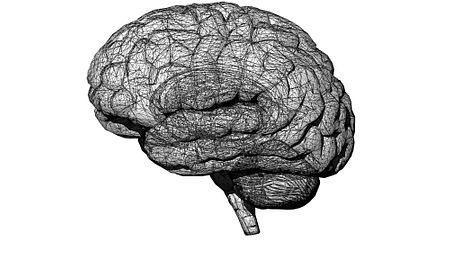How Mutated Parkin Protein Causes Form of Early Onset Parkinson’s Detailed

The parkin protein, whose mutated form is linked to certain cases of early onset Parkinson’s disease, protects neurons by lowering levels of potentially harmful oxidants, and by removing them from areas where they might do harm, a study reported.
Exactly how parkin worked to help protect brain cells from this disorder was not previously known.
The study, “Age-associated insolubility of parkin in human midbrain is linked to redox balance and sequestration of reactive dopamine metabolites,” was published in the journal Acta Neuropathologica.
The PRKN gene codes for the parkin protein, and certain mutations occurring in both copies of that gene — each person receives one copy from their mother and one from their father — is known to lead to early onset disease, or Parkinson’s diagnosed before age 50.
Parkin contains a number of cysteines — amino acids (the building blocks of proteins) working to maintain a cellular balance between chemicals that create a more acidic or basic environment. A rise favoring chemicals of one environment over the other can damage or kill a cell. This balance is known as “redox equilibrium” in scientific literature.
Researchers led by a team at the University of Ottawa and Ottawa Hospital reasoned that mutant parkin might cause an imbalance in cellular redox equilibrium, leading to the oxidative stress implicated in the death of dopamine-producing neurons, a process at the heart of Parkinson’s.
Examining human brain tissue, they found the parkin protein loses its ability to remain in solution — its solubility, or ability to dissolve — with age, much like the crystals that form at the bottom of older wine bottles.
In human tissue from the midbrain region, where dopamine-producing neurons die, nearly 50% of the cells’ parkin remained soluble before 20 years of age, while over 90% had grown insoluble after 50 years of age. Parkin remained soluble much longer, however, in cells taken from the spinal cord and muscle, isolating this effect to brain areas known to be involved in Parkinson’s.
This age-related change in solubility was not evident in any other protein the researchers tested, or in animal brain tissue, suggesting that it is unique to people.
“Unlike in the brain, approximately 50% of detectable parkin remain soluble in the spinal cord and in skeletal muscle from aged human subjects, and a comparable loss of parkin solubility is not observed in aged rodent brain and adult monkey cortex,” the researchers wrote.
As parkin lost its solubility, levels of hydrogen peroxide — an oxidant — rose within cells. Without healthy parkin present, the team reported, elevated levels of hydrogen peroxide were evident in human brain tissue, in isolated dopamine-producing cells, and in the brains of mice exposed to MPTP, a chemical commonly used to model Parkinson’s in these animals.
Researchers also found that parkin worked to maintain redox equilibrium by binding to reactive dopamine metabolites called dopamine radicals. The protein effectively neutralized these damaging radicals, preventing them from interacting with other cell components.
Mutant parkin, however, could not do this.
The investigators suggested that parkin’s role in neutralizing and sequestering dopamine radicals might explain why dopamine-producing neurons are more likely to die in people with parkin deficiency.
“If confirmed by future work,” the researchers concluded, “this redox chemistry-based expansion of parkin functions in the ageing human midbrain may open the door to testing its anti-oxidant role in related neurodegenerative conditions, such as late-onset, non-PRKN-linked [Parkinson’s].”
This, they say, emphasizes the importance of identifying people with mutations in both PRKN copies, as they may benefit most from early interventions.
“If we could deliver antioxidants or a healthy copy of the parkin gene into the brains of people with these mutations, this could help slow down or even halt early-onset Parkinson’s,” Julianna Tomlinson, PhD, a co-senior author and scientific project manager, said in a university press release.
“What we don’t know yet is whether such an approach could also benefit individuals with late-onset Parkinson’s that is not linked to the parkin gene,” added Michael Schlossmacher, a neurologist, study co-senior author, and director of neuroscience at The Ottawa Hospital. “We are eager to investigate this.”






